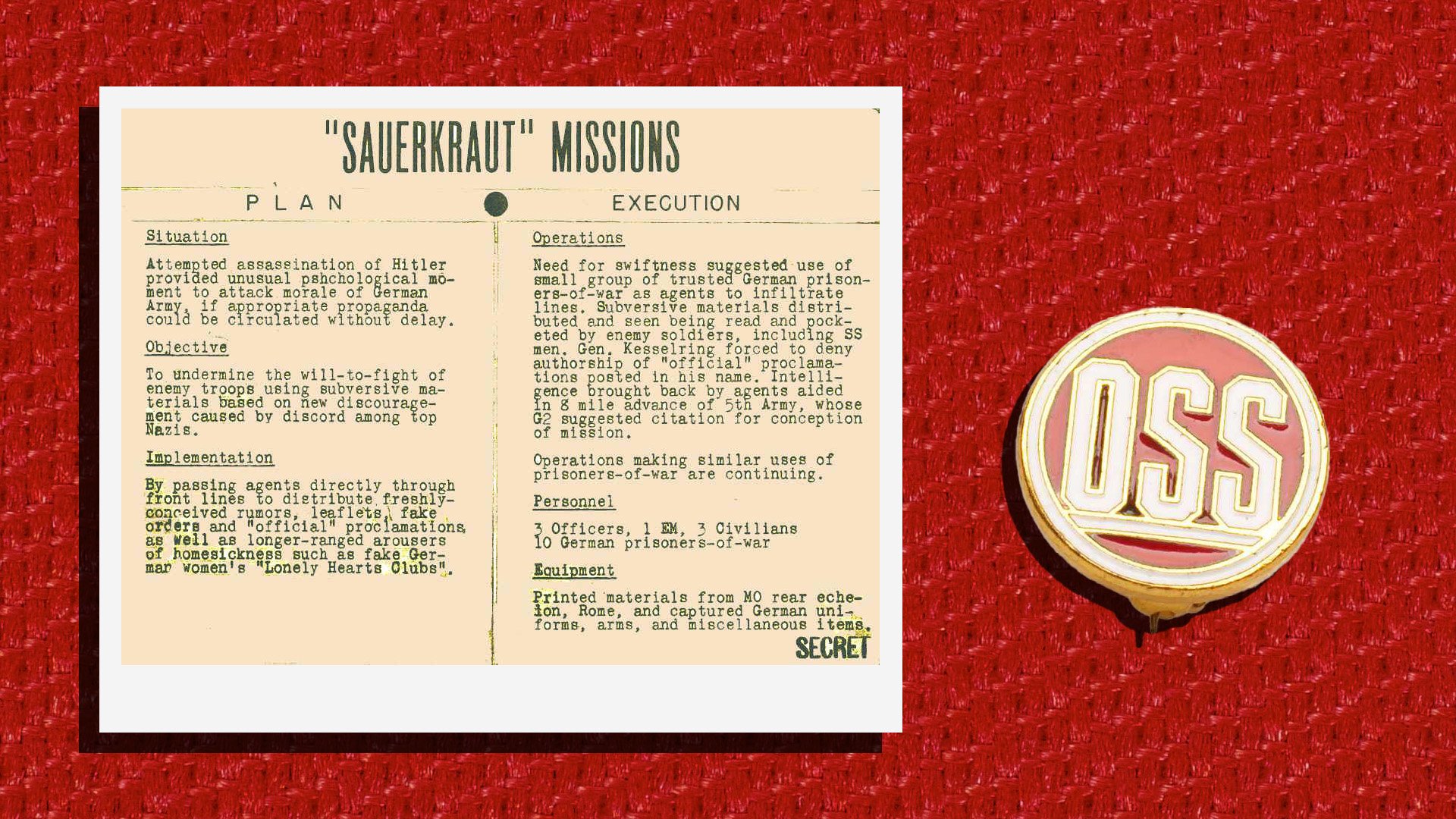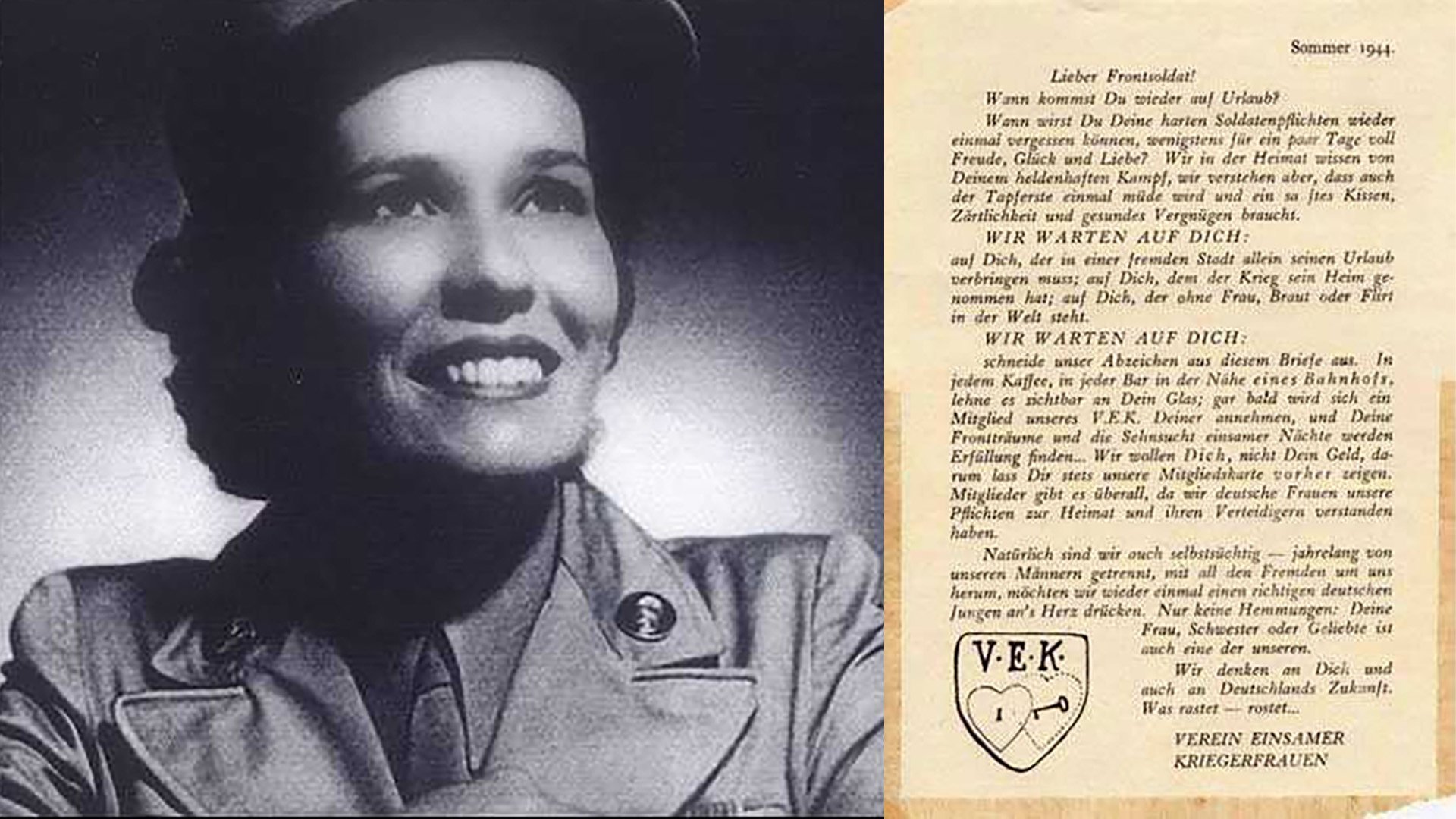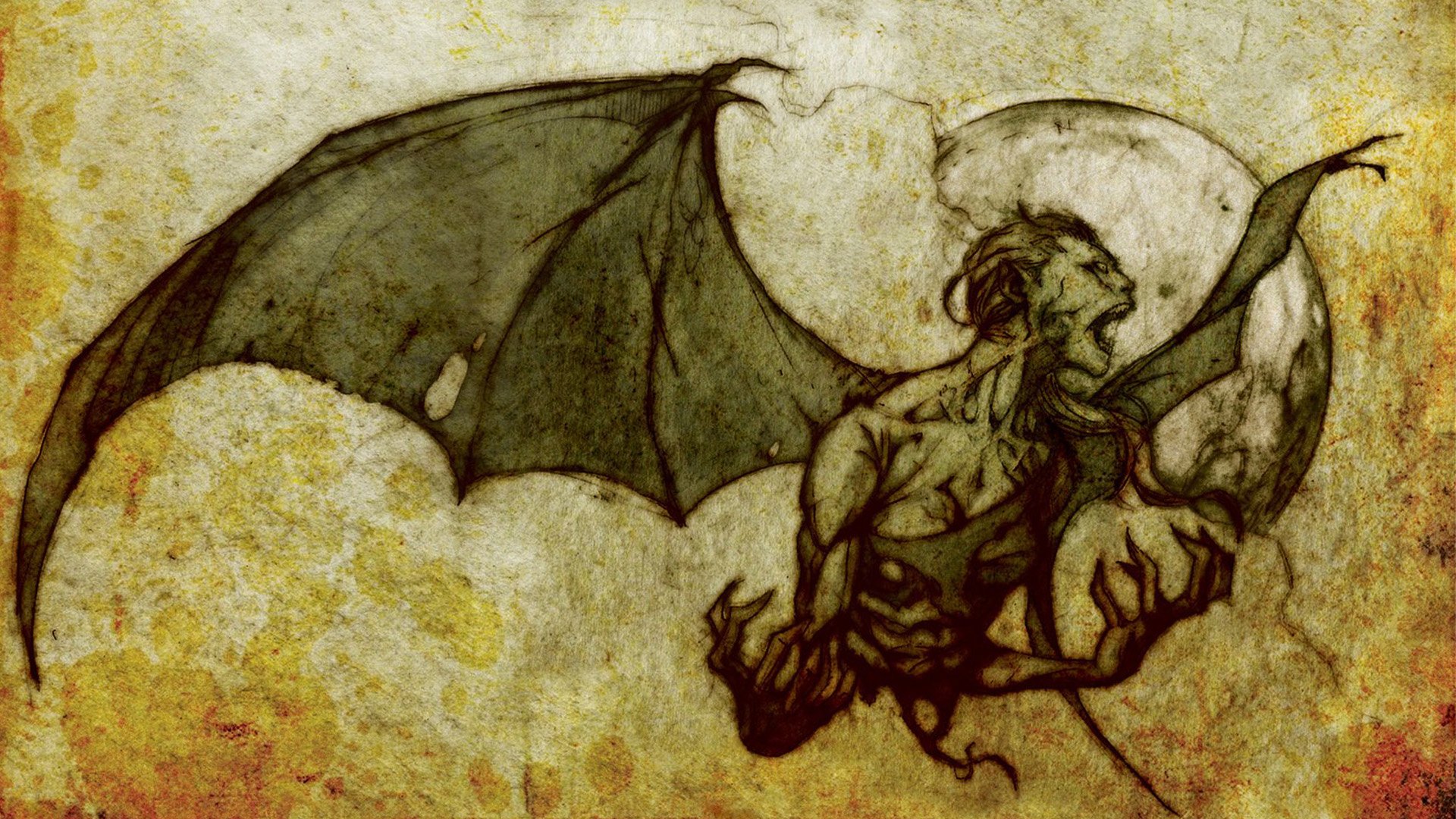Killer Vampires, Demon Dolls, and Sauerkraut: A Brief History of American PSYOPS

Soldiers from the U.S. Army's 350th Tactical Psychological Operations, 10th Mountain Division, drop leaflets over a village near Hawijah in Kirkuk province, Iraq, on March 6, 2008. The leaflets are intended to promote the idea of self-government to area residents. Wikimedia Commons photo.
Psychological Operations, or PSYOPS, were first reportedly employed by American troops during the Revolutionary War, when rebels distributed leaflets calling for enemy soldiers to desert the British military. According to the Library of Congress, the leaflets worked as intended, inspiring thousands of Hessian mercenaries and British servicemen to turn their backs on Europe and settle down permanently in America.
Despite the success of that campaign, it wasn’t until the turn of the 20th century that PSYOPS became a frequently used tool in America’s arsenal. With the advent of more reliable forms of communication, such as radios and motion-picture films, PSYOPS could now be applied in large-scale campaigns that targeted entire nations through media. The Creel Committee, the first US agency specializing in wartime propaganda, leveraged media technologies to generate domestic support for America’s involvement in World War I, boost morale among the troops, and denigrate the enemy. The US expanded its PSYOPS capacity in the years after the war, and its methods and tactics only grew crazier and more imaginative. Here are five noteworthy examples.
Operation Sauerkraut

An original Office of Strategic Services document on the Sauerkraut missions. Wikimedia Commons photo. Composite by Coffee or Die Magazine.
Click here to try Black Rifle Coffee Company’s darkest roast — Murdered Out!
In the summer of 1944, a group of German military officers plotted to assassinate Adolf Hitler using a bomb hidden in a briefcase. Col. Claus Schenk Graf von Stauffenberg brought the briefcase to a meeting inside the Wolf’s Lair — a secret Nazi command center on the Eastern Front — and planted it under a table where Hitler was seated. Stauffenberg left the meeting and watched the building explode. Then he headed to Berlin, convinced the explosion had done its job. But it hadn’t.
The briefcase, it turned out, had been moved away from Hitler just before it exploded, and the shrapnel missed its mark. Within hours of the failed assassination attempt, the Morale Branch of the Office of Strategic Services (OSS) commenced Operation Sauerkraut, a psychological operation aimed at exploiting growing disillusionment within the German Army. The hope was that the campaign would inspire more German officers to follow Stauffenberg’s example and betray the Nazi leadership.
Barbara Lauwers, an OSS officer who participated in Operation Sauerkraut, had the task of interviewing German prisoners of war in Italy who were willing to turn against the Third Reich. A select group of them was provided with fake identity papers, cover stories, German uniforms, weapons, survival supplies, and approximately 3,000 propaganda leaflets, then sent back to the front lines.
Lauwers instructed the defectors to nail the leaflets to trees and buildings and scatter them throughout the streets. Examples of these leaflets included one announcing that Field Marshal Albert Kesselring, the German commanding general, had resigned his post out of fear that the Axis was losing the war. The propaganda was so effective that Kesselring had to issue a formal address refuting the rumor. Because Operation Sauerkraut was so successful, the Allies eventually expanded the campaign into Italy and France.
The League of Lonely War Women

Office of Strategic Services operative Barbara Lauwers, left, was the only woman on the Morale Operations staff and was credited with inventing "The League of Lonely War Women." The "black" propaganda leaflet, right, was one of the leaflets the group distributed. CIA photos.
All the flavor with none of the stimulants — click here for Black Rifle Coffee’s Just Decaf roast!
In addition to Operation Sauerkraut, Barbara Lauwers formed a secretive network of saboteurs known as “The League of Lonely War Women.” The campaign targeted young, homesick German soldiers on leave throughout Western Europe.
Propaganda leaflets disseminated along the front announced that soldiers who wore red hearts pinned to their lapels would be approached by members of the League of Lonely War Women — essentially, promiscuous spouses and girlfriends of deployed troops — and treated to a good time. The German soldiers' belief in the "lonely war women" would plant the idea that their own wives and girlfriends back home were also being unfaithful.
Vampires in the Philippines

The CIA weaponized Filipino folklore, such as the mythical beast pictured here, to terrorize insurgents in the Philippines. Wikimedia Commons photo.
Grab your coffee on the go with BRCC’s ready-to-drink cans!
In 1946, shortly after the conclusion of World War II, the US granted the Philippines its independence, but with the stipulation that the US maintained expansive control of the country’s economy. Following the move, death squads loyal to the American-backed Filipino government launched a campaign to purge the country of dissidents. Entire villages were wiped off the map, and many Filipino civilians were killed or went permanently missing.
In time, Filipino veterans, including members of the guerrilla outfit called Hukbalahap, who had previously been aligned with the US to liberate the Philippines from the Japanese, were radicalized by the killings and took up arms against the government. Eventually, a full-blown civil war broke out.
The US military, which was in the process of expanding its footprint in the Philippines, searched for solutions to end the violence. In September 1950, Lt. Col. Edward Lansdale, the head of the CIA’s clandestine and paramilitary operations in the Philippines, arrived in the country to helm a counterinsurgency campaign that would heavily rely on the use of PSYOPS. Lansdale’s team observed that the Hukbalahap guerrillas and their peasant support base were deeply superstitious and inclined to believe in mythical creatures, including the asuang (also spelled aswang), an umbrella term for a vampirelike monster.
During one mission, CIA operatives told the residents of a certain village that an asuang lived just beyond a nearby hill. The CIA allowed two days to pass, giving their local allies ample time to spread the rumors about the vampire’s presence. Then, the PSYOPS team ambushed a group of Hukbalahap rebels along a frequently traveled footpath. The team snatched the last man in the patrol, punctured his neck with two holes, drained the blood from his body, and placed the corpse back on the trail. When the rebels discovered the bloodless body, they fled the region, fearing the asuang might come for them next.
Operation Wandering Soul
After Lansdale’s success in the Philippines, weaponizing cultural superstitions was deemed an effective means of psychological warfare. In the Vietnam War, the US Army used a similar tactic to prey upon the common belief among the Vietnamese that, if a deceased person did not receive a proper burial, then their soul would be left wandering the land in unbearable pain and suffering.
The 6th PSYOP Battalion launched Operation Wandering Soul in the late 1960s. The operation involved broadcasting spooky audio tracks throughout the jungles at night in the hopes of scaring and demoralizing the Viet Cong. One such audio track is the infamous Ghost Tape Number 10, which was typically broadcast from loudspeakers affixed to Army helicopters or Navy swift boats. The tape played eerie sounds of gongs banging, whimpering soldiers, crying women, and other horrifying sounds. South Vietnamese soldiers and sympathizers were even recruited to provide a sense of realism to the voices. Ghost Tape Number 10 was reportedly played between 1969 and 1970, with varied results.
Bin Laden Demon Doll

A US psychological operations leaflet used in Afghanistan depicting terror leaders, including Usama Bin Laden, with skull faces. Wikimedia Commons photo.
For the best espresso, get Black Rifle Coffee’s AK47 blend here!
In 2005, US troops were four years into the Global War on Terror, and Usama Bin Ladin was still alive and influential across the Middle East. So the CIA hatched a plan to discredit the al Qaeda leader in the eyes of young people who might be tempted to answer his call to jihad.
The CIA program — called “Devil Eyes” — revolved around the creation of an action figure that resembled Bin Laden. The CIA commissioned Donald Levine, a Korean War veteran and a former Hasbro executive who was instrumental in popularizing G.I. Joe, to design the prototype. The action figure Levine came up with wore Bin Laden’s signature white robe and long black beard, but it also had a specially adapted face coated in heat-dissolving material that would melt to reveal a red-faced demon with green eyes. Although the project showed promise, the CIA reportedly discontinued it during the prototype phase.

Matt Fratus is a history staff writer for Coffee or Die. He prides himself on uncovering the most fascinating tales of history by sharing them through any means of engaging storytelling. He writes for his micro-blog @LateNightHistory on Instagram, where he shares the story behind the image. He is also the host of the Late Night History podcast. When not writing about history, Matt enjoys volunteering for One More Wave and rooting for Boston sports teams.
BRCC and Bad Moon Print Press team up for an exclusive, limited-edition T-shirt design!
BRCC partners with Team Room Design for an exclusive T-shirt release!
Thirty Seconds Out has partnered with BRCC for an exclusive shirt design invoking the God of Winter.
Lucas O'Hara of Grizzly Forge has teamed up with BRCC for a badass, exclusive Shirt Club T-shirt design featuring his most popular knife and tiomahawk.
Coffee or Die sits down with one of the graphic designers behind Black Rifle Coffee's signature look and vibe.
Biden will award the Medal of Honor to a Vietnam War Army helicopter pilot who risked his life to save a reconnaissance team from almost certain death.
Ever wonder how much Jack Mandaville would f*ck sh*t up if he went back in time? The American Revolution didn't even see him coming.
A nearly 200-year-old West Point time capsule that at first appeared to yield little more than dust contains hidden treasure, the US Military Academy said.












